Capturing Images of the Archimedes Palimpsest
In the initial imaging experiments on the Archimedes Palimpsest, the camera used by Keith Knox and Roger Easton was a monochrome camera with a liquid crystal tunable filter. It was set up on a conventional copy stand, as you see below. The imagers used the tunable filter to capture images in narrow wavebands. With this equipment the imagers could neither achieve sufficient resolution, nor could they create satisfactory "data cubes."

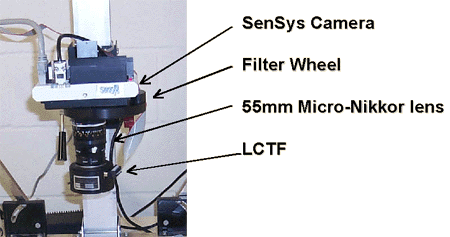
Standard Imaging
From 2001 through 2006, approximately 15 leaves of the Archimedes Palimpsest were imaged every six months, in a period of 10 days. In order to create images of sufficient resolution (about 600dpi), each leaf was imaged in ten sections.
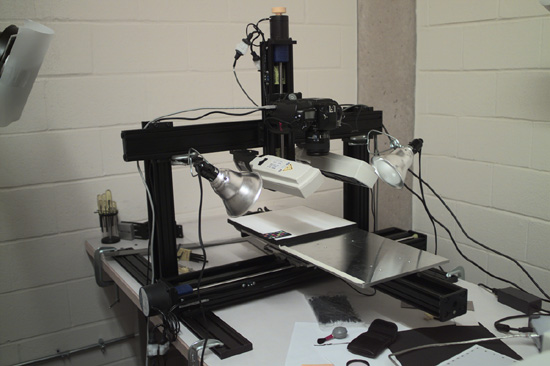

The various images of sections of each leaf were then stitched together to form images of entire pages. Instead of using filters, the imagers simply used different light sources: ultraviolet, Tungsten, and Strobe.
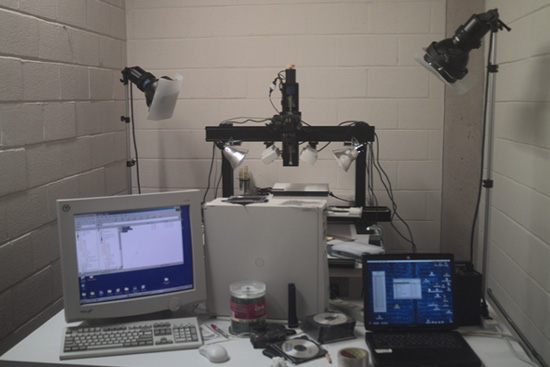
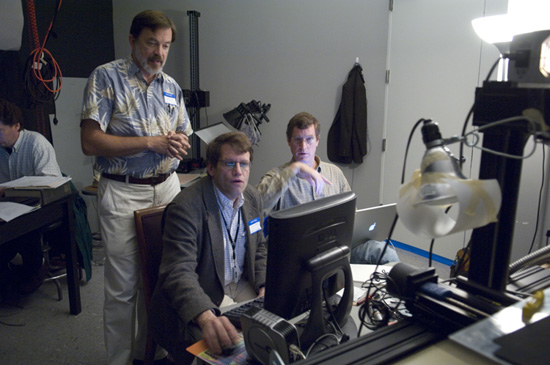
Experiments
While the imagers created images that scholars deemed adequate, they also experimented in order to improve performance. Bill Christens-Barry developed a system of collecting images taken in narrow bands of light using light emitting diodes. In an early version, this system worked in conjunction with the XY stage built by Roger Easton. This necessitated capturing a very much larger number of images. The imagers also tried imaging in transmissive light and raking light. Here are some pictures of this system at work.
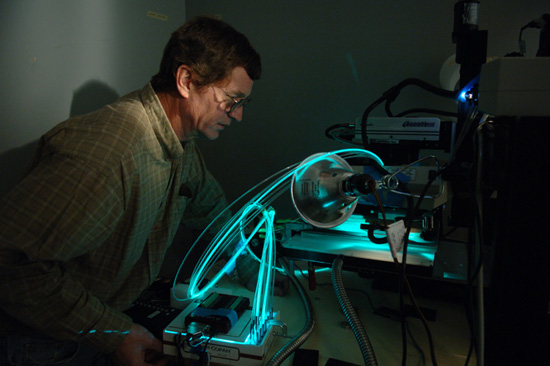
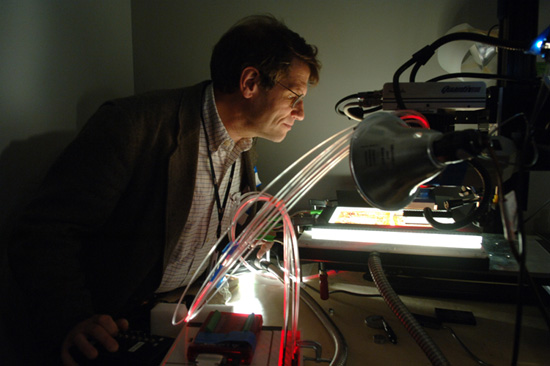

Final Imaging Session
The final Imaging Session took place in August 2007. Bill, Keith, and Roger collaborated with Stokes Imaging of Austin Texas. The Stokes capture station was used in conjunction with a Sinar camera.
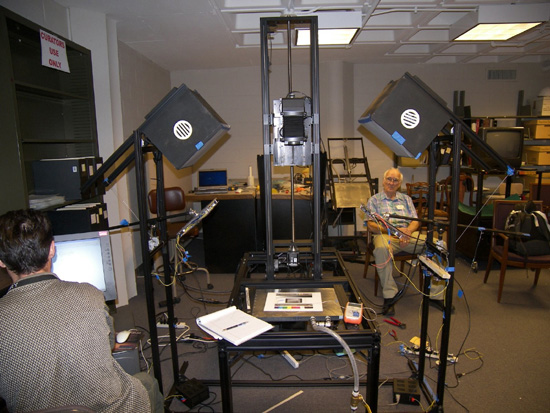 It was adapted to our purposes, and Bill Christens-Barry designed LED panels for the illumination.
It was adapted to our purposes, and Bill Christens-Barry designed LED panels for the illumination.
Each leaf was imaged in twelve different wavelengths of light, from ultraviolet through infrared. Such was the resolution of the camera, that we could image entire leaves, and still maintain a resolution of 800 dpi, which was deemed sufficient by the scholars. Stokes software was used to manage the prodigious amount of metadata we were capturing.

Using this system we were able to image the entire manuscript in just under three weeks. Six years of work was redone in three weeks.
However: the magic has not happened yet. None of these images produce easily legible text.

In none of these images is the text legible. Legible text is only produced in the post processing, and this is a whole different stage in the process, and one of which Keith Knox was the master.